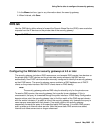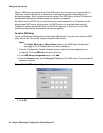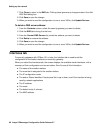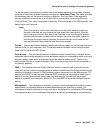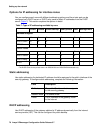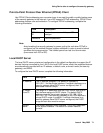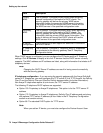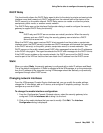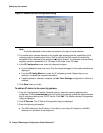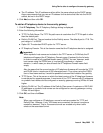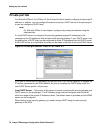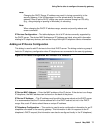
Using Device tabs to configure the security gateway
Issue 4 May 2005 71
Point-to-Point Protocol Over Ethernet (PPPoE) Client
Use PPPoE Client addressing as a convenient way to connect the public or public-backup zone
of the security gateway to the Internet, if your ISP supports PPPoE addressing. PPPoE Client
addressing requires user authentication. To configure PPPoE addressing, complete the
following information
Note:
Note: Avoid resetting the security gateway by power cycling the unit when PPPoE is
configured, as this method requires a proper shutdown in order to avoid a lockout
condition during reconnection. This lockout period can last for a few minutes
(time varies from ISP to ISP).
Local DHCP Server
The local DHCP server private port configuration is the default configuration to support the IP
devices that are connected to your LAN. In the local DHCP server mode, the protected devices
are automatically provided with an IP address, a default route, a domain name (the security
gateway), and WINS.
To configure the local DHCP server, complete the following information:
Field Description
PPPoE User
ID
Account user name which your ISP
assigns
Password Account password
Field Description
IP Address The IP address assigned. The default IP address is
192.168.1.1 for the private interface. If multiple interfaces on a
security gateway have DHCP server configured, their IP
addresses must be unique.
IP Range
From/To
The range of IP addresses that the DHCP server that runs on
the interface assigns to DHCP clients. The default DHCP
address range for the private interface is 192.168.1.32 to
192.168.1.127. Each security gateway on the VPN requires a
unique DHCP range. In addition, if multiple interfaces on a
security gateway have DHCP server configured, the DHCP
range on each also must be unique.
Domain
Name
The domain assigned to the interface. This is only applicable
to the private interface. The default for domain name is
“private.”



